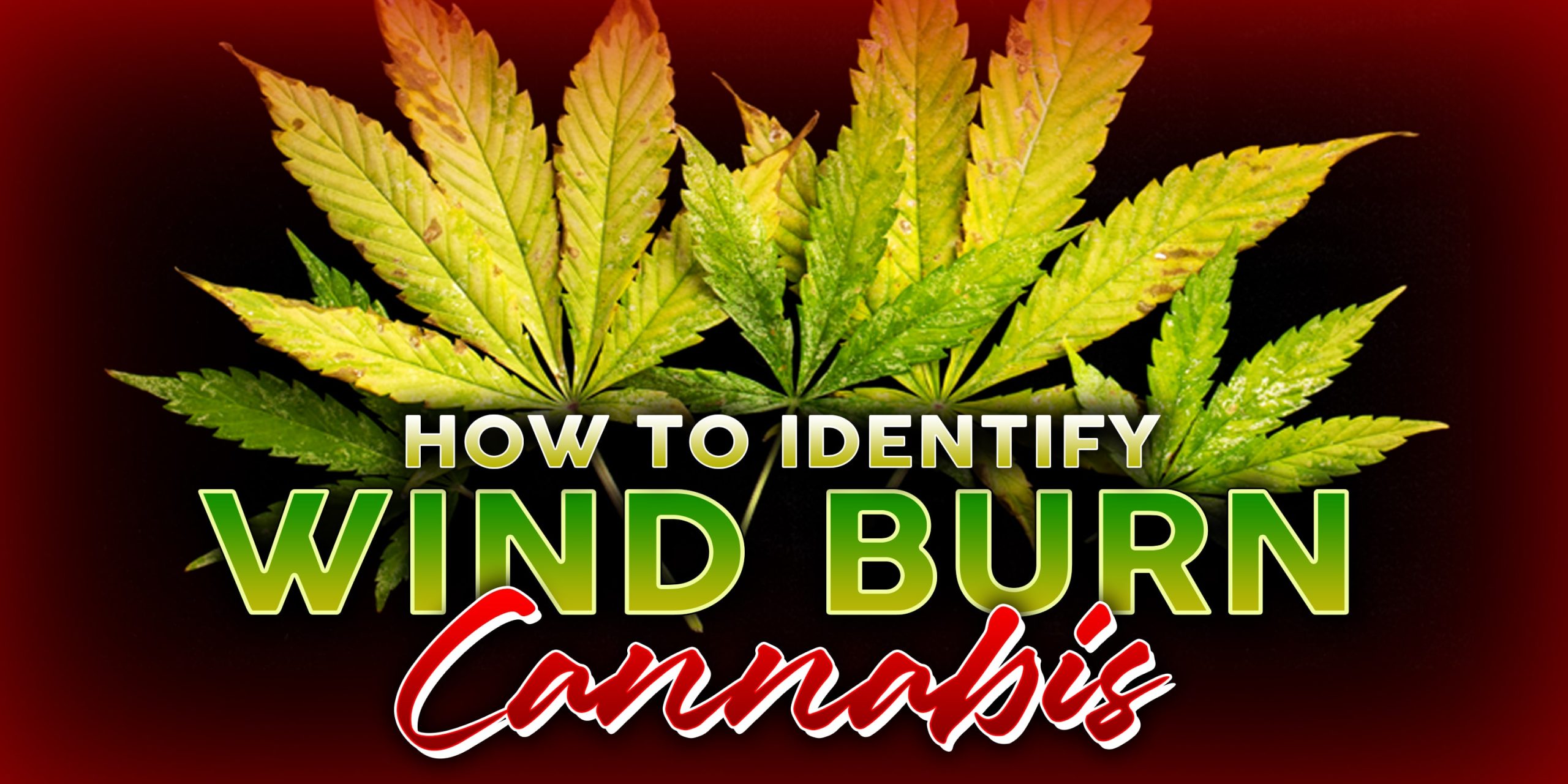



Table of Contents
ToggleWind burn on weed plants isn’t just about how it looks; it can really hurt the plants and how well they grow. When cannabis plants are in strong winds, it messes with how they work inside, making it hard for them to make food from sunlight and take in nutrients. Knowing how wind burn happens is important to handle it the right way.
To correctly spot wind burn in cannabis, you need to take a careful, step-by-step approach and pay close attention to how the plants look.
Here’s what you should do:
Begin by closely examining your cannabis plants. Look at the leaves for any curling, color changes, or damage. Pay attention to the overall appearance of the leaves, including their size, shape, and texture, as wind burn can alter these characteristics. Leaf curling, a common symptom, happens because the plant tries to hold onto water. Also, watch out for discoloration on the edges and tips of the leaves, like yellowing or browning, which shows the cells are damaged from the wind. If your plants are growing slowly, have burned leaves, or look droopy, these are more signs they might have wind burn.
Check out the surroundings where your plants are growing and see how they might be exposed to wind. Think about things like where your plants are, how high up they are, which way the wind usually blows, and how strong it is. You can use tools like wind gauges or weather monitors to get exact numbers on how fast and how long the wind blows.
Look at pictures or guides that show what wind burn looks like on cannabis plants. Compare what you see on your plants to these images to make sure it’s wind burn. Pay attention to how the leaves look and the kind of damage you see, and see if it matches up with what you’re seeing on your plants.
Ask for help and advice from online forums or communities where people talk about growing cannabis. Experienced growers there might have been through wind burn before and can give you some good advice based on what they’ve learned.
Watch how your cannabis plants react when you change how you’re growing them or try different treatments. Write down any changes you see, whether they get better or worse. Then, you can change what you’re doing to help your plants get over the wind burn and start growing better again.
Wind burn can look a lot like other problems plants have, like not getting enough nutrients or being bothered by pests. But some differences can help you figure out if it’s wind burn. Unlike when plants don’t get enough of a certain nutrient, which shows up in specific parts of the plant, wind burn usually affects all the leaves that are in the wind. Also, wind burn mostly happens on the parts of the plant that face the wind all the time. Pests usually cause damage in just one spot or leave a pattern where they’ve been eating.
In conclusion, identifying cannabis wind burn requires a combination of observational skills, environmental awareness, and knowledge of plant physiology. By familiarizing yourself with the symptoms and diagnostic methods outlined in this guide, you can effectively recognize and address wind burn in your cannabis plants. Remember to prioritize preventive measures such as wind barriers and proper ventilation to minimize the risk of wind burn occurrence. With proactive management and timely interventions, you can ensure the continued health and vigor of your cannabis crop, maximizing yields and quality.
Q: Can indoor cannabis plants experience wind burn?
Indoor cannabis plants are less susceptible to wind burn but can still be affected if exposed to strong drafts or improper ventilation.
Q: How can I prevent wind burn in my cannabis plants?
To prevent wind burn, provide adequate shelter, use windbreaks, and ensure proper airflow management in indoor setups.
Q: Will wind burn affect my cannabis yield?
Yes, severe wind burn can negatively impact cannabis yield by stressing plants and hindering their growth potential.
Q: Can wind burn be mistaken for nutrient deficiencies?
Yes, wind burn symptoms can resemble those of nutrient deficiencies, emphasizing the importance of accurate diagnosis.
Q: Is wind burn reversible?
Early detection and intervention can help mitigate the effects of wind burn, but severe damage may be irreversible.
Q: Are certain cannabis strains more susceptible to wind burn?
Yes, some cannabis strains may be more prone to wind burn due to their genetic makeup and leaf structure.



Best Selling
Feminized Seeds
Regular Seeds
Customer Help
Contact Us
WE SELL MARIJUANA SEEDS IN THE USA

Are You 18 Or Over?
YesOr
No By clicking yes, you certify that you are over 18. By using this website, you agree to our legal disclaimer.